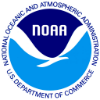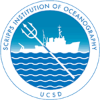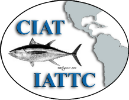Framework
The CAPAM is supported by three institutions and located on the campus of Scripps Institution of Oceanography in La Jolla, California, USA.
- University of California San Diego/Scripps Institution of Oceanography/Cooperative Institute for Marine Ecosystems and Climate (UCSD/SIO/CIMEC)
- National Oceanic and Atmospheric Administration Fisheries/Southwest Fisheries Science Center (NOAA Fisheries/SWFSC)
- Inter-American Tropical Tuna Commission (IATTC)
Research Programs at CAPAM broadly address animal population biology and dynamics and in particular, fish stock assessment modeling theory and application in fishery science. Programs incorporate specific projects that typically span a 2-3 year timeframe and include CAPAM staff, post-doctoral candidates, visiting scientists, as well as workshops to disseminate research efforts and receive input from interested parties and outside experts. An advisory panel acts in the role of a review body by ensuring research projects are conducted in a timely and scientific manner. Overall, CAPAM provides an efficient infrastructure for conducting modeling research on biologically and economically important marine resources, both regionally and internationally. Ultimately, CAPAM’S deliverables directly benefit the educational and research missions of all three institutions, SIO, SWFSC, and IATTC.
One ongoing Program at CAPAM is the Good Practices in Stock Assessment Modeling, which includes a number of projects that address the theories, estimators, and assumptions used in contemporary stock assessment model development, e.g., selectivity, catchability, growth, natural mortality, spawning stock-recruitment relationship, covariates, spatial structure, data/likelihoods weighting, multispecies and ecosystem considerations, and diagnostics.


